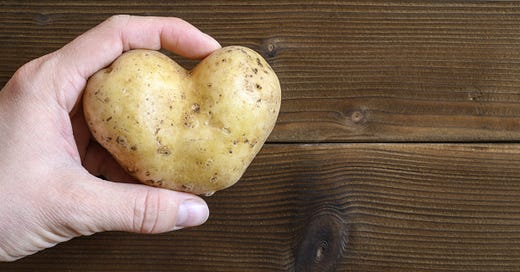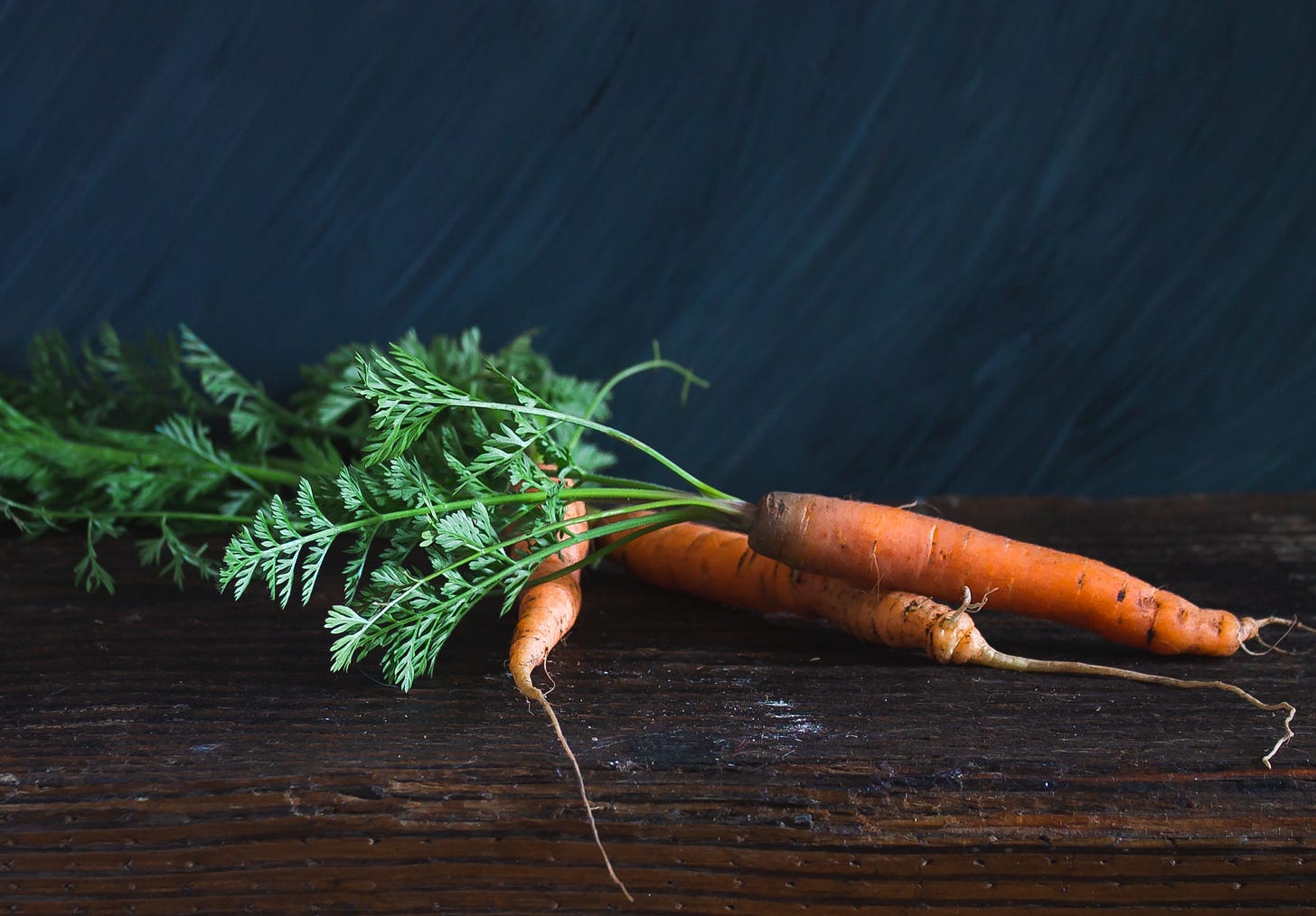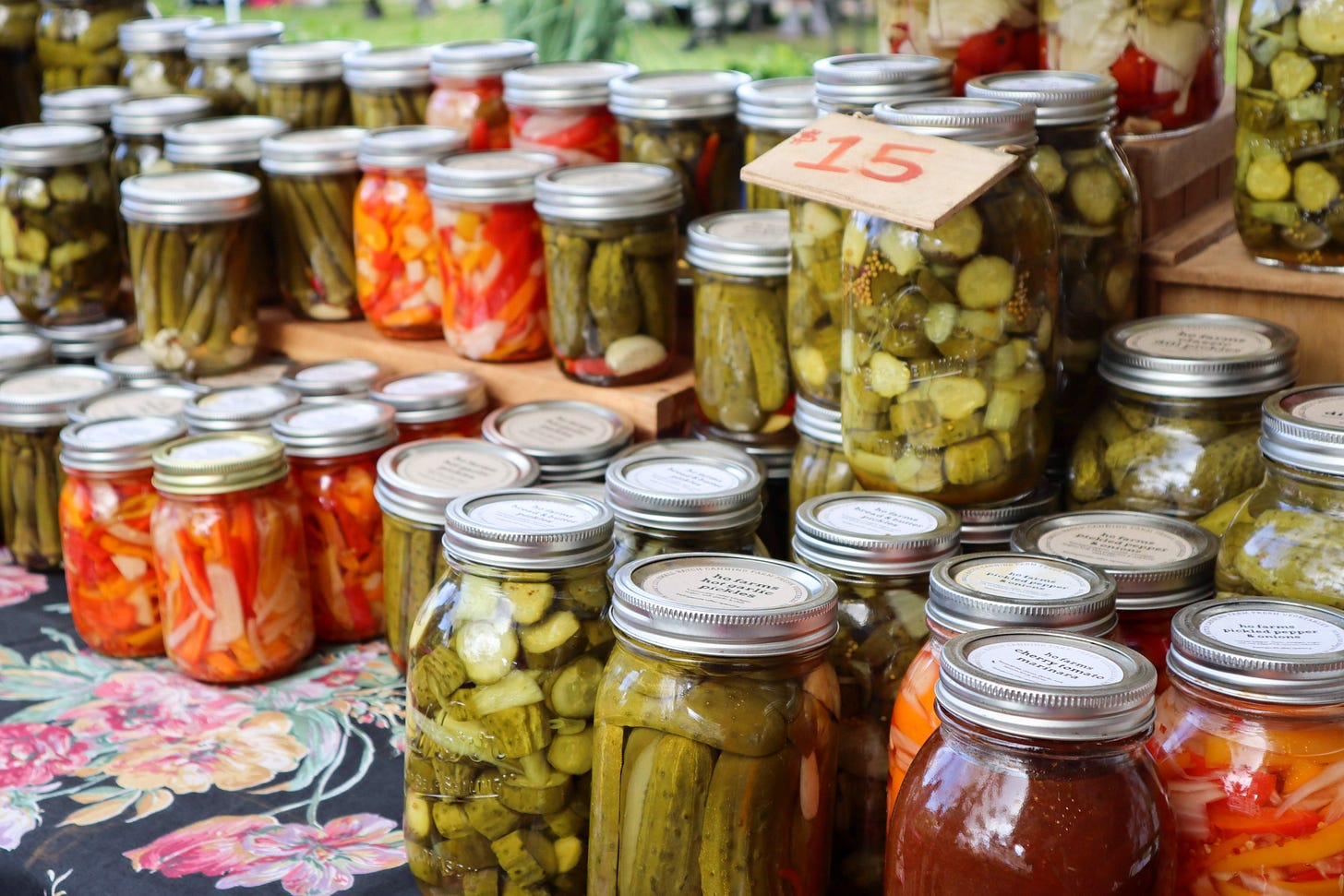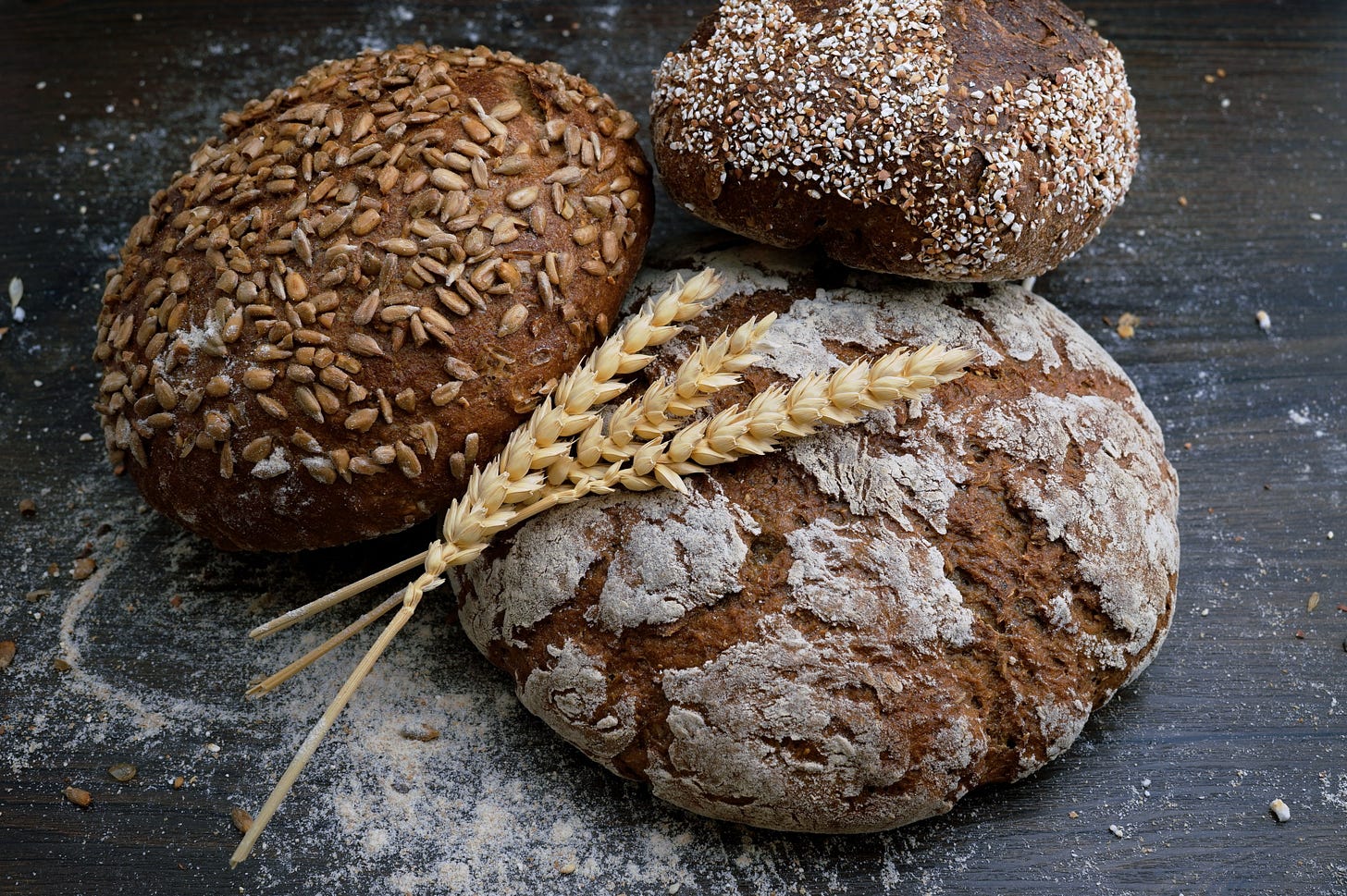The Climate-Food Issue
We explore a new climate-oriented food seal, offer recipes, and examine Biden's first 100 days.
Happy Tuesday, People of LFTF. I’ve taken a bit of a break, trying to figure out how to craft Letter From the Forest in such a way that it is timely, insightful, helpful and a good read. We all only have so much time. Annie recently dismissed a newsletter that landed in her inbox with the acronym TLDR. It means Too Long Didn’t Read. I hope to avoid TLDR summations!
Enjoy this week’s TLDR-free LFTF, people!
Upcycled Food Association’s New Seal Fights Climate Change
Prior to my involvement with the Upcycled Food Association, I didn’t give much thought to food waste. I assumed that whatever I tossed in the trash just turned into compost. As a pro-compost sort of fellow, this seemed fairly win-win.
But it turns out food waste instead molders, broadcasting methane into the atmosphere. Methane is far more effective at trapping Earth’s heat than carbon dioxide. I discovered that about 40 percent of all food ends up getting thrown away, and that the biggest occupant of landfills is old food.
And then I learned that cutting back on food waste is the single most effective thing people can do to combat global warming. If we just use all what we grow, raise and buy, we achieve big steps towards cutting our greenhouse gas emissions.
The UFA spent many months crafting the third-party certification program that serves as the foundation of the seal program. Interested in buying foods that incorporate upcycled food? Just look for the seal (starting, we hope, in August).
I dove deep with UFA CEO Turner Wyatt about the UFA and the seal program. Check it out.
The Biden Blitzkrieg on Climate
He pledged to serve as a true environmental steward, a president who would award climate a leading role on stage rather than a bit part. Climate, he said, would not be the stage equivalent of a sad little cardboard tree with a kid inside hoping her parents in the audience understand which tree she pilots across the stage.
“Remember, mom and dad — I’m the elm!”
Here we are, more than 100 days into Biden’s first term, and he kept his word. Climate is a Biden administration diva. She’s rarely off stage. Fear, passion and tension swirl around her.
The question is: How is her performance?
In a non-TLDR fashion, we explore where Biden stands on climate now, and we issue a report for this first 100 days. Discover the grade by reading the short, snappy story.
A Scrappy Bunch of Recipes for Turning Food Waste into Delicious Things
Looking for the UFA seal, and supporting the movement by purchasing products emblazoned with the seal, will help diminish food waste. So will eliminating the waste you create there in the kitchen every day.
It’s Saturday around 4:30, you’ve got a Adrianne Lenker radio station on Spotify, a cold glass of Cab Franc rosé from the Loire Valley is juicing your excellent mood, and you’re cooking something fun. Make the evening downright rhapsodic by doing something with those pieces of veg you were gonna’ scrape into the trash can.
Many of us (hand raised, here) think we’ll fill plastic bags with vegetable scraps, and once the bag is full we will transform it into stock and then freeze for later use. But then … we don’t do that. At worst, those scraps go to the landfill. At best, they turn into compost.
Let’s explore some avoid-food-waste gambits that we might pursue with more enthusiasm.
Pickle brine. This is liquid platinum, especially if it’s live-cultured brine, meaning the fermentation was not killed by pasteurization. One common brand, Bubbies, has live cultures. If you don’t like the taste of pickled vegetables, it might not be for you. If you savor the flavor, try some of these ideas.
If you have live-culture pickle juice, do shots. It’s great for your gut. Use it to add flavor to soups.
Wrestling with a dull dish? Maybe your baba ganoush lacks oomph, or the sauce you are crafting for salmon is just bland? Spike it with pickle juice.
Marinate meat or tofu in pickle juice. I recently made DIY Chik-Fil-A-style sandwiches. The KEY to the whole thing was marinating the chicken breast in classic dill pickle juice. Stella recently did the same trick with tofu, for meatless Chik-Fil-A sandwiches. Worked!
Think of it like hot sauce — a condiment you routinely reach for to add a little zing.
Bread. It goes stale. And then it heads to the trash. Instead, cut it into cubes, drizzle it with oil, salt and any other flavors you like (for example, smoked paprika) and bake it in a 300 oven. Turn it in 15 minutes. At 25 or 30 minutes, those croutons should be done. Another bread option? Bread crumbs. Blitz the stale bread in a food processor and freeze the bread crumbs.
Broccoli. We always peel the stalks after we have removed the florets, and then slice the stems into thin coins. They are superb in stir fries, salads, soups, gratins and more.
Herbs. Use the entire thing, unless it has an extremely woody stem, like thyme and rosemary. With cilantro, I often rough chop the top parts. As I get closer to the parts that are all stem, I’ll dice the stems and smash them in a mortar and pestle and add to the soup, curry, stir-fry or whatever it is that calls for cilantro. I’ll even just smush them with the flat side of a knife (did this two nights ago). Don’t wanna’ smush? No sweat. Just heave that tablespoon of diced stems into the dish while cooking. They’ll add tons of cilantro flavor.
Potato peels. Save ‘em! While the potatoes or boiling or roasting or whatever, toss those peels on a baking sheet, drizzle oil, shower with salt, and bake in a 350 degree oven until they turn crispy, anywhere from 10 to 20 minutes. Yummy.
Lemons. This one can involve a little time in a freezer, but it’s not nearly as big of a to-do as saving all vegetable scraps, making stock and freezing it. Those juice-less lemon halves are great additions to cooked grains. A lemony pasta dish, for example, is enlivined by the presence of lemon peels in the pasta-cooking boiling water. Rice dishes? Background whispers of lemon can improve the final dish, thanks to lemon halves in the pot with the cooking rice.
Cheese nubs. A long time ago Annie read about fromage fort, thanks to a Jaques Pépin recipe. You take all of those scattered cheese nubs in the fridge, blitz them with garlic, dry white wine, black pepper and salt. Press it all into ramekins and freeze ‘em. Having a dinner party? In the mood for some cheese deliciousness on a Friday night after a week of work, to be nibbled slathered on French bread along with sips of a bracing glass of Verdicchio or Chenin Blanc? This is the way to go. Annie wrote about it, and included a recipe, in her wonderful website, A Boulder Kitchen. Check out the recipe, bookmark the website and subscribe to alerts. She’s a goddess.
Vegetable tops. Two words: green sauce. Those carrot and fennel tops, those tidy bouquets of greens above radishes and turnips? They all can easily be turned into variations on a theme of pesto. Zhoug. Pistou. Salsa verde. Chimichurri. Chermoula. No matter what you call it and how you prepare it, the idea is similar. Turn those green things into beautiful sauces. Food & Wine offers an excellent guide.








